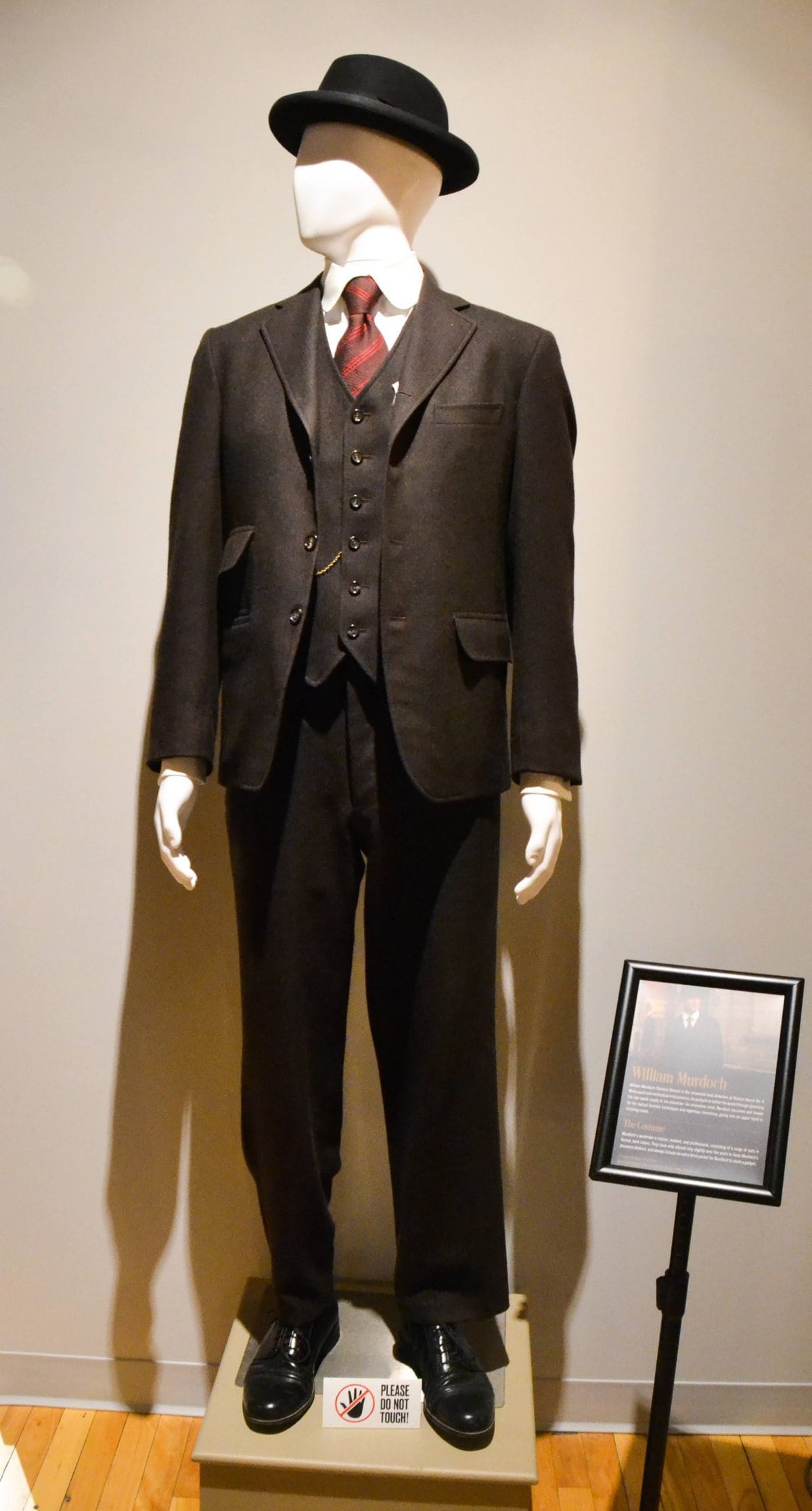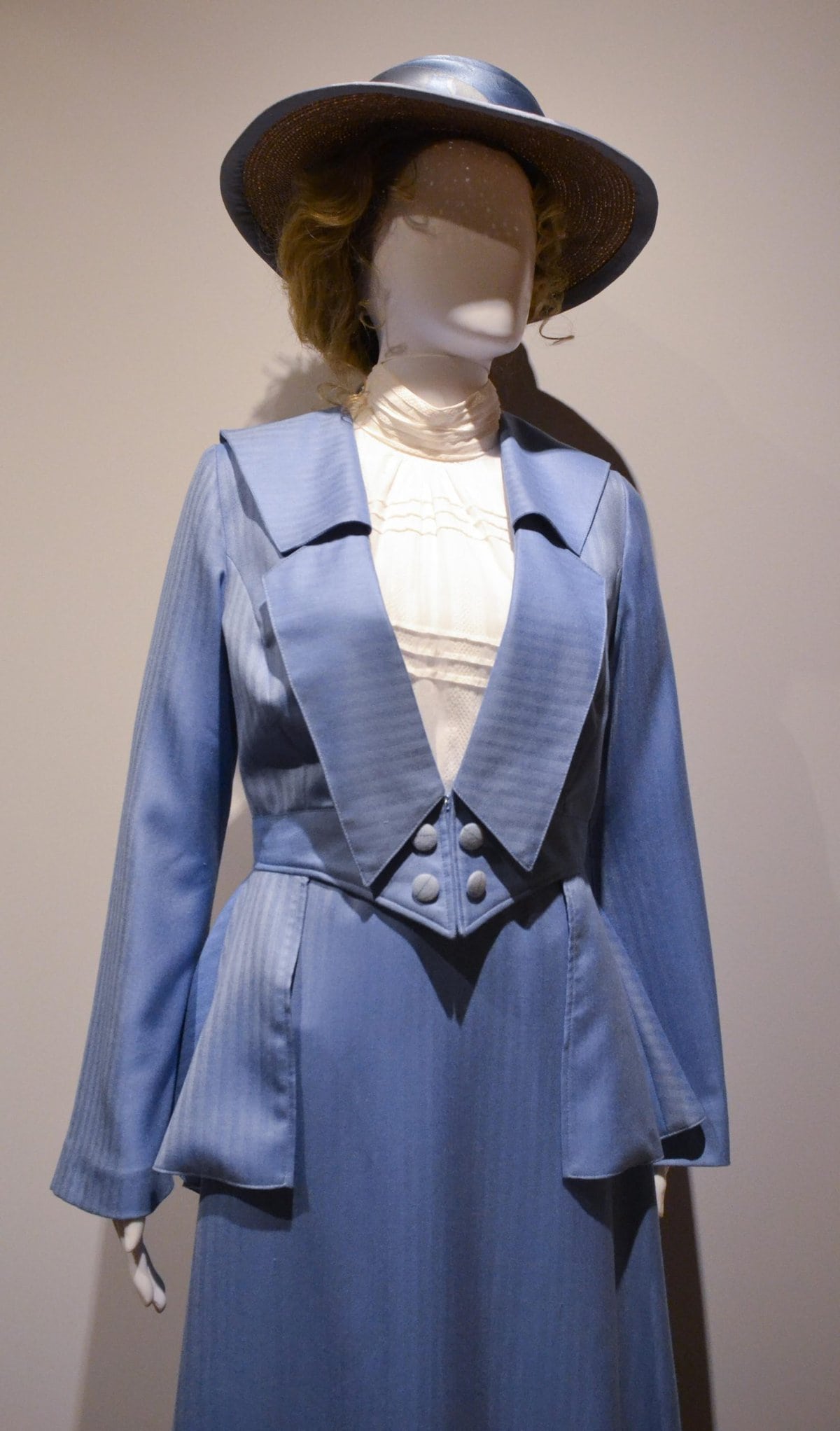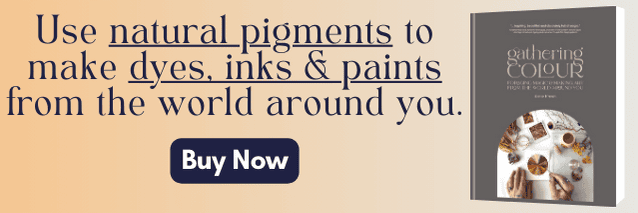What do you get when you combine a murder mystery, a costume designer, a knitter, a quilter, a pandemic, and an international fandom? In this case, you get a community quilt project that used fabric scraps from costumes to bind together a diverse group of crafters.
Canadian costume drama/detective show Murdoch Mysteries is currently in its sixteenth season, and its fans are spread around the world. For those who have not seen it, the show centres around fictional detective William Murdoch and his colleagues in the Toronto Police Force and coroner’s office, starting in 1895 and continuing into the early twentieth century. Technological and scientific discoveries of the Victorian and Edwardian eras are often key to the plot. The show is also known for casting Canadian celebrities—everyone from former Prime Minister Stephen Harper to astronaut Chris Hadfield and Olympic medalist Andre De Grasse—in roles that wink slyly (or broadly!) at their real-life personas. Costumes are an important part of the show, defining characters and adding depth and texture to a lively vision of Canada’s past.

One of Detective Murdoch’s suits, specially tailored with a third pocket to hold one of his experimental gadgets.

One of Dr. Julia Ogden’s stylish-but-practical outfits, with a combination of feminine blouse and menswear lapels that speak to her position as a trailblazing professional woman.
Immerse yourself in the vibrant world of Canadian fibre and textiles!
Digits & Threads offers a steady stream—and extensive archive—of inspiring Canadian content. Connect with like-minded art and craft enthusiasts through our exclusive monthly live Studio Hours. Expand your creative horizons and find inspiration in every stitch.
Join for 90 days for just $9.
Emily Mooney lives in Toronto, where the show is set (and where the production company, Shaftesbury Films, is based). She started watching Murdoch with her daughter when it became available on Netflix, and, a prolific knitter and a relatively new quilter, Emily dreamed of having her knits wrapped around the shoulders of her favourite characters. She joined the online fan community and began to seek out the show’s cast when they appeared locally; it was at a play starring one of the actors that she met Joanna Syrokomla, the show’s costume designer. The two women chatted briefly and promised to get in touch about a vintage dress in Mooney’s collection.
The COVID-19 pandemic derailed those plans, but while Syrokomla kept her sewing team busy sewing fabric face masks, Mooney arranged to buy a few and went to pick them up from Syrokomla’s home. The two got chatting out on the front porch and were soon talking costumes and Murdoch. Before long, Mooney was lending her knit lace shawls to the show, and Syrokomla and Shaftesbury Films were buying yarn for Mooney to knit bespoke items for the production—from capelets and cardigans to mittens, hats, and scarves.
On one visit to the costume studio, Mooney mused aloud about the scrap fabric, left over from making the costumes, in all the rich colours and textures that shine on the television screen. Soon enough, she found herself going home with several black garbage bags full of scraps, and from there, a plan was hatched.

A quilt block with diagonal stripes of blue, print, and ivory lace fabrics; one diagonal is itself made up of a checkerboard of other fabrics. The maker has made some embellishments with decorative machine stitching, and even a little blue button surrounded by a stitched sunburst.
Mooney consulted her quilting instructor Johanna Masko, and, together with Syrokomla, they came up with a scheme to sort the scraps by character and by colour, and bundle them into sets which they could then send to fans, to be turned into crazy-quilt-style blocks. In the Victorian era, the crazy-quilt was a very popular style of quilting at all levels of society, so it fit well with the aesthetic of the show. This style also has the distinct advantage that it doesn’t rely on precision piecing and measuring—useful when using scraps and when including sewists of a variety of skill levels.

A block with black and gold fabrics, incorporating plaid suiting and ornate florals, contrasted with slivers of delicate cream gauze.
Makers from the fan community signed up to sew quilt blocks, and soon the bundles were winging their way across North America and Europe. The youngest sewist involved made her very first quilt block for the project, and others made more intricate pieces, including one square with embroidered floral motifs cut from one fabric and appliquéd onto other fabrics. The costume fabrics are definitely not standard quilting cotton, which presented some challenges; Mooney describes Syrokomla hand-stitching some delicate pieces to muslin backing before incorporating them into her own quilt blocks.

This quilt block shows embroidered motifs from the fabric in the centre panel, cut out and appliquéd onto other fabrics in the block.
Once all the blocks were returned to Mooney, she invited Syrokomla and Masko to her cottage, and together they made a few final blocks and then laid out the quilt. The quilt was originally conceived as a gradient, but they instead settled on a design with diagonal bands of coloured blocks to create better balance. They made the black sashing between the panels from offcuts of Detective Murdoch’s classic black suits; a close view shows that some strips have a stripe with a subtle sheen, and others have a slight crosshatched texture. The wider bands around the edge of the quilt are cut from what Mooney gleefully refers to as “constable pants” (always with a devilish cackle). She describes how they literally cut strips from the uniformed officers’ extra trousers, leaving only waistbands with their pockets hanging from them. Shaftesbury Films then paid longarm quilter Michelle Reddy to quilt and bind the piece.

A section of the finished quilt, showcasing the range of colours and fabrics used. The mustard yellow and black log cabin motif in the bottom centre block resembles the neckline of a dress bodice, perhaps a reference to a specific gown worn in the show.
The quilt was an integral part of Murdoch Mysteries: The Experience, an exhibit at THEMUSEUM in Kitchener, Ontario, which included recreations of Detective Murdoch’s office and the city morgue, a selection of props, and displays of costumes from the show. The exhibit was launched in Kitchener with a full Murdoch Experience weekend, including an episode screening with live orchestral accompaniment, panel discussions with the cast, and even a murder mystery dinner. (While to date there are no official plans to tour the exhibit, hopefully it will appear in other cities across Canada.)




When the exhibit is retired, the plan is to auction off the quilt and donate the proceeds to the Urban Alliance on Race Relations, an organization that provides mentorship and internship opportunities for racialized youth in Toronto, as well as anti-racism training. Mooney, who sits on the board of the organization, says that the charity’s work aligns well with the values of Shaftesbury Films, where there have been deliberate strides towards equality both on and off camera.
Meanwhile, Mooney waxes lyrical about the connections she’s made through the television show, particularly with the fandom community (on Tumblr, Discord, and beyond). She says that it’s remarkable how warm the friendships are, how supportive, and how sustaining. In particular, the Discord fanbase is a younger population, with a substantial proportion of queer youth. “They put up with me,” she laughs. But one gets the sense that she feels a bit like a den mother to them and would leap to protect them should the need arise.
Elsewhere, she has connected with adult fans who have turned to the comfort of the show during difficult times. One woman from the UK, who contributed a square to the quilt—and travelled to Canada for the launch weekend events at THEMUSEUM in Kitchener—signed up to participate in the quilt project shortly after her father passed away. She found that the tangible connection to the world of the show and to the community of fans really came to life through handling the fabric and sewing the quilt block.

More of the blocks from the quilt, showcasing the rich and saturated colour palette Syrokomla uses on the show.
Mooney emphasizes that her strong connection with Syrokomla likely wouldn’t have come about without the pandemic. They had met prior to it, but only in brief encounters, and it was her trip to purchase masks and the enforced pause in the hectic Murdoch Mysteries production schedule that really allowed them to connect.
The connection between Syrokomla and Masko has also been fruitful and sustaining in its own way: Masko, Mooney’s quilting instructor, worked for a time as part of Syrokomla’s costume team on the show.
Murdoch Mysteries | The Experience at THEMUSEUM in Kitchener, Ontario, ran from November 12, 2022, until February 4, 2023.
All images by Anne Blayney, unless otherwise noted.





